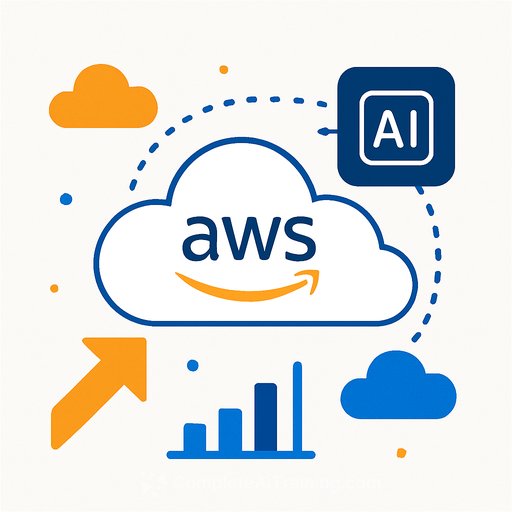Future-Proof Your Strategy With an Open Source AI Playbook
Enterprises are pouring money into AI, but the results aren't lining up with the hype. Research cited by MIT NANDA suggests 95% of enterprise AI pilots fail, which means much of the $30-$40 billion spent isn't returning measurable value.
AI is still essential. The difference between teams that ship value and teams stuck in endless pilots comes down to focus, architecture, and execution. Here's a practical playbook to build momentum now and scale with confidence.
Sponsored by Red Hat.
Why Open Source Should Be Your Default
Open source keeps you flexible. You can move across clouds, swap components, and avoid getting boxed in by a single vendor. That matters when models, tooling, and regulations keep shifting.
It also gives your teams visibility. You can inspect code paths, audit behavior, and contribute fixes instead of waiting for tickets to be prioritized. Transparency beats guesswork.
The Enterprise AI Playbook
1) Tie AI Directly to Business Outcomes
- Pick use cases where you can prove value in weeks, not quarters.
- Define 1-3 metrics that matter (cycle time, cost per ticket, NPS, win rate, defect rate).
- Kill or scale based on those metrics. No vanity dashboards.
2) Start Where Friction Is Obvious
- Look for high-volume, repetitive work: support triage, sales follow-up, policy checks, QA, migration tasks.
- Automate the boring parts first. Keep humans in control for risk and judgment calls.
3) Use an Open, Modular Architecture
- Containerize everything; schedule with Kubernetes or a managed equivalent.
- Standard building blocks: vector database, feature store, model registry, secret management, API gateway.
- Pick components you can replace without rewriting your stack.
4) Get Your Data Ready
- Identify source systems, owners, and quality gaps up front.
- Create a simple data contract: schema, refresh cadence, retention, PII policy.
- Add retrieval augmentation for LLM use cases so answers are grounded in your docs, not guesswork.
5) Make a Clear Model Strategy
- Decide when to use hosted APIs, self-hosted open models, or fine-tuned variants.
- Use a small set of models that cover 80% of needs (general LLM, code, vision, embeddings).
- Keep a scoring sheet: cost per 1k tokens, latency, accuracy on your data, privacy requirements.
6) Treat LLMOps/MLOps as a Product
- Version everything: prompts, datasets, models, evaluation sets, guardrails.
- Automate testing and rollout: shadow, canary, then general availability.
- Add observability: input quality, drift, refusal rates, cost per task, incident tracking.
7) Build Security and Compliance In
- Threat-model your pipelines and agents. Enforce least privilege for tools and connectors.
- Log prompts and outputs with redaction for PII. Keep audit trails.
- Map controls to an accepted framework like the NIST AI Risk Management Framework.
8) Control Cost From Day One
- Set budgets per use case. Track cost per resolved ticket, per lead touched, or per claim processed.
- Cache prompts, batch requests, and right-size context windows.
- Move steady workloads to more efficient models once accuracy is proven.
9) Keep Humans in the Loop
- Route edge cases to experts. Capture their decisions to improve future runs.
- Make approvals easy: one-click accept/edit/reject in the tools your teams already use.
- Publish clear guidelines on acceptable use and data handling.
10) Prove It, Then Scale
- Define what "done" looks like before you start: baseline, target, time window.
- Graduate pilots with a readiness checklist: accuracy threshold, cost ceiling, on-call rotation, rollback plan.
- Document the runbook so other teams can reuse it without starting from scratch.
Common Pitfalls to Avoid
- Pilots that never end because success wasn't defined.
- "Model tourism" - trying every new model instead of standardizing on a small set.
- Tool sprawl that creates hidden costs and brittle integrations.
- Ignoring data quality and governance until production (that's when it hurts most).
- Lock-in that limits your options when prices or policies change.
Your Open Source Reference Stack (Checklist)
- Compute: Containers, autoscaling, GPU/CPU pools.
- Orchestration: Kubernetes with namespaces and quotas.
- Data: Lakehouse or warehouse, vector DB, catalog, access controls.
- Model layer: Inference server, registry, eval harness, adapters for hosted APIs.
- Guardrails: PII filters, policy checks, tool access limits, content moderation.
- Observability: Tracing, cost tracking, feedback loops, drift detection.
Fast, Low-Risk Use Cases to Build Momentum
- Customer support summarization and next-best reply suggestions.
- Internal knowledge assistant grounded in your policies and SOPs.
- Sales email follow-up from CRM notes with approval steps.
- Code refactoring and test generation with mandatory review.
What's Coming Next
An upcoming ebook, "AI for the Enterprise: The Playbook for Developing and Scaling Your AI Strategy," distills how leading teams are delivering real outcomes. Expect practical guidance on selecting use cases, architecting for portability, and scaling safely without burning the budget.
Make Enablement Part of the Plan
Tools don't create results; trained teams do. Set aside time and budget for hands-on learning, internal communities of practice, and shared templates your org can reuse.
If you want a curated path to upskill managers, IT, and developers, explore job-focused programs at Complete AI Training.
AI isn't optional anymore. A clear playbook, an open stack, and strict focus on measurable outcomes will keep your strategy grounded - and your pilots on a short path to production.
Your membership also unlocks:










